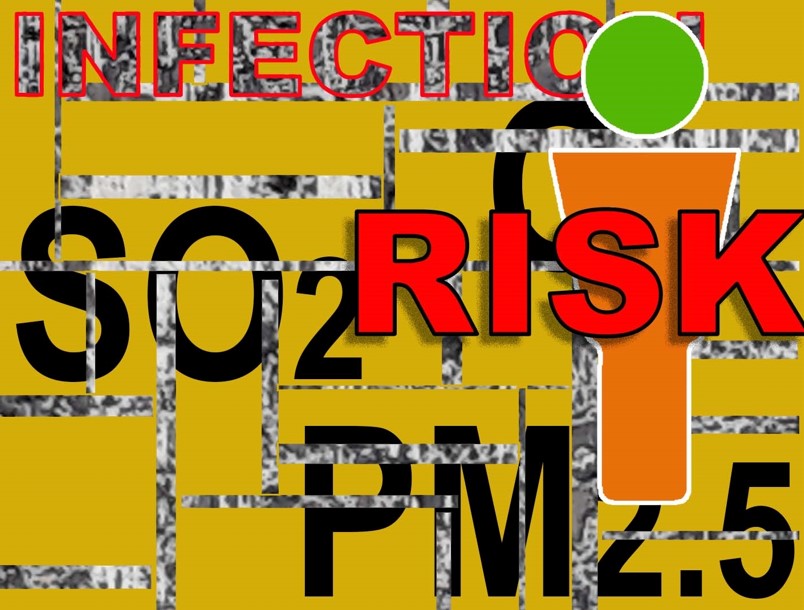This study examines the relation between ambient air pollution and emergency department (ED) visits due to certain infectious diseases in Toronto, Canada. The National Ambulatory Care Reporting System database was used to draw the corresponding health cases. Daily data on ED visits, ambient air pollution concentration levels, and weather conditions during the period from April 2004 to December 2015 (4,292 days in total) were linked together and used in statistical models. Six air pollutants (fine particulate matter PM2.5, CO, NO2, SO2, ozone O3 as a daily average, and ozone O3-8 hour ozone, as a maximum eight hour average) were investigated. In addition, the Air Quality Health Index (combining NO2, O3, and PM2.5) was also considered. The time-stratified case-crossover technique was applied in the study design. Conditional Poisson models were created using the daily counts of ED visit data. The considered factors, air pollutants and weather, were lagged by the same number of days, from 0 to 14. In the period of the study 339,644 ED visits were identified; 177,619 for females and 162,025 for males. For each air pollutant 270 models were realized (15 lags x 18 strata). Ambient air pollution concentrations lagged by 2, 3, and 5 days have the highest impact on ED visits, with 34, 32, and 35 positive associations, respectively. For all patients and an increase in a one interquartile range (IQR=1.2 ppb) of sulphur dioxide, the following values of the relative risks (RR) were estimated: RR=1.005 (95% confidence interval: 0.998, 1.013), 1.008 (1.001, 1.016), 1.009 (1.001, 1.016), 1.011 (1.004, 1.019), 1.007 (0.987, 1.028), and 1.009 (1.002, 1.016) for lags from 0 to 5, respectively. The results suggest that exposures for certain air pollutants (mainly CO, O3, and SO2) in urban environment affect the number of ED visits related to infectious diseases.

